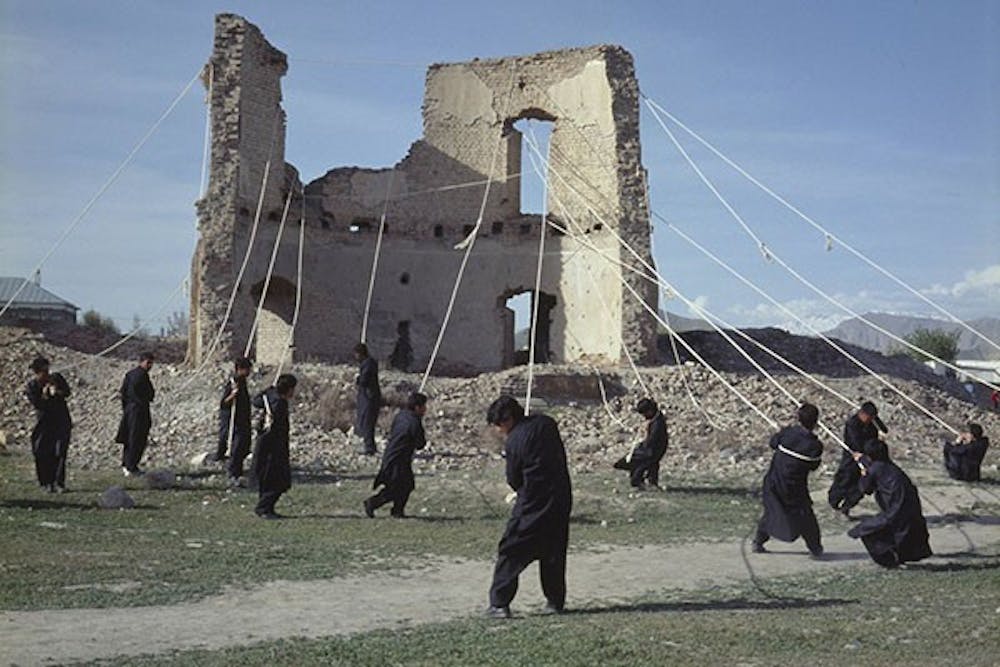In a certain fashion, the dimly lit, underground ASU Art Museum frames the dark tones of some new pieces on display. "Shifting Sands: Recent Videos from the Middle East" is exactly what its namesake proclaims. Six videos from from four filmmakers show the region's citizens in ways that are harrowing and definitely thought-provoking.
On their own, the films don't provide much context with the message they are attempting to put through. One video shows how a group of Israeli youth pass the time in a seemingly violent (to us) yet fun (to them) physical game. Another shows the treacherous road one woman walks each day, to and from work, over a military-controlled border. A third shows a woman covered in black garb, painting a destroyed building as a form of reclaiming what was lost.
However, in reading the descriptions of each film, you realize that the lack of context is the point. They are designed for the viewer to come to their own conclusions simply by watching closely. In Yael Bartana's “Kings of the Hill,” the truck drivers struggling to scale the dunes are all men. Very few women are shown in the film, save two watching the show. The film's description says that while some have construed the movie as a display of machismo, there are other thoughts to be divined from it.
“Multiple readings are conceivable,” according to the statement. “On a more figurative level, the drivers' attempts to scale huge mounds of earth may symbolize ongoing territorial disputes and dreams of conquering the land.”
Lida Abdul's “What We Saw Upon Awakening,” is a slow-motion tale told of a group of 15 men, similarly dressed, trying in vain to pull down a large bombed-out building. Seeing the strain and desperation in their eyes leads one to ask the question: Why is this building in particular is so important to tear down? What was it prior to its destruction? No words are heard from the men, not even grunts of strain against the mass. The burying of the lone piece they were able to extricate feels like a push to move on from the past.
Isabel Rocamora's piece, “Horizon of Exile,” is one of the more personable films on display. Through interpretive dance against the backdrop of deserts and the narration of four expatriated women, two women portray the anguish and desperation that comes from being exiled. The solemn dukduk, an Armenian wood instrument, frames the sadness that permeates the film throughout, and the wide open spaces that carry the two women give a forceful sense of loss.
The women tell their tale through interpretive dance — choreographed by Rocamora. Their movements are slow, with brief bursts of energy. Outstretched hands and quick yells seem to push the notion of uncertainty after their exile.
Each piece found in "Shifting Sands" convey a number of feelings — sadness, shock and even a bit of confusion. But they are tailored to make viewers craft their own interpretations of each one, and show the middle east in a different light than what is seen in the media today.
"Shifting Sands: Recent Videos from the Middle East" will run until Nov. 29 at the ASU Art Museum.
Reach the reporter at djulienr@gmail.com or follow him on Twitter @legendpenguin
Like The State Press on Facebook and follow @statepress on Twitter.





